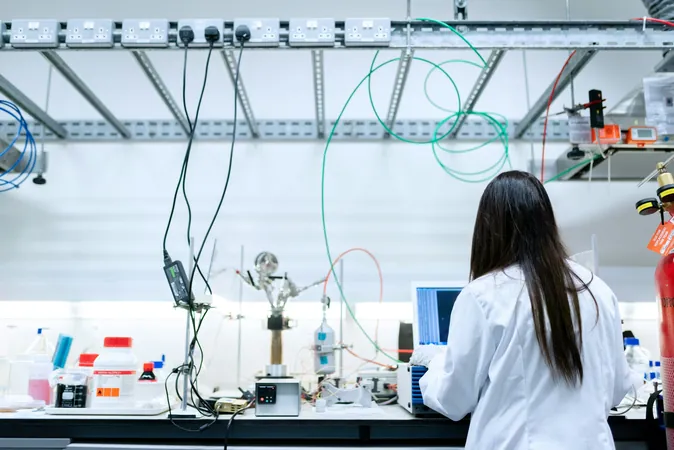
Revolutionizing Cell Research: Scientists Create Groundbreaking 'Virtual Cell Lab'
2025-07-25
Author: Yu
A New Era for Cellular Research
Scientists at renowned institutions, including Indiana University and Johns Hopkins Medicine, have achieved a remarkable breakthrough: a computer program that simulates human and animal cell behaviors across the body. This innovative tool is set to transform how researchers study biological processes, drug responses, and cell dynamics without the need for costly live cell experiments.
The Digital Twin Concept
Imagine a 'digital twin' that accurately mirrors live cells, allowing researchers to test drug impacts on conditions like cancer or to investigate gene-environment interactions during brain development. This concept is rapidly becoming a reality, thanks to the team's efforts at institutions like the University of Maryland and Oregon Health & Science University.
How It Works: The Power of PhysiCell
At the heart of this revolution is PhysiCell, a cutting-edge software developed by Indiana University's Paul Macklin. It utilizes agent-based modeling, where each type of cell is represented by an 'agent' governed by algorithms that mimic real-life cellular rules. This enables scientists to observe tumor behaviors, immune interactions, and brain cell organization—capturing dynamic processes once deemed impossible.
Streamlined Modeling for Scientists
Macklin emphasizes the user-friendly nature of the new program, critiquing traditional simulation programs that required extensive mathematical knowledge to operate. With PhysiCell, even biologists with minimal coding experience can create complex immunology models within hours—a game-changer in the field.
Visualizing Cellular Dynamics
The program translates user-friendly formulas into intricate mathematical equations that guide cell behavior. This innovation allows teams to visualize how different cell types interact within tissues and tumors in three-dimensional representations, essential for understanding human diseases.
Harnessing Data for the Future
The research team, led by Genevieve Stein-O'Brien at Johns Hopkins, has also integrated advanced software that builds visual 'movies' that depict cell interactions over time. This vital approach enables scientists to study how cell behaviors evolve and adapt, a critical component in developing effective treatments.
Real-World Experiments Validate Predictions
In a striking experiment, researchers demonstrated that their model simulating how macrophages invade breast tumors mirrored real-life observations: increased cell movement correlated with tumor growth. This validation showcases the model's potential as a predictive tool in cancer research.
Looking Ahead: A Virtual Cell Laboratory
Stein-O'Brien envisions a future where this virtual cell lab prioritizes hypotheses, guiding scientists in their benchwork towards the most promising therapeutic targets. With ongoing enhancements, including the integration of artificial intelligence, the project aims to continuously refine and adapt to new medical research data. This pioneering initiative is set to reshape the landscape of cellular biology, opening new avenues for scientific exploration.


 Brasil (PT)
Brasil (PT)
 Canada (EN)
Canada (EN)
 Chile (ES)
Chile (ES)
 Česko (CS)
Česko (CS)
 대한민국 (KO)
대한민국 (KO)
 España (ES)
España (ES)
 France (FR)
France (FR)
 Hong Kong (EN)
Hong Kong (EN)
 Italia (IT)
Italia (IT)
 日本 (JA)
日本 (JA)
 Magyarország (HU)
Magyarország (HU)
 Norge (NO)
Norge (NO)
 Polska (PL)
Polska (PL)
 Schweiz (DE)
Schweiz (DE)
 Singapore (EN)
Singapore (EN)
 Sverige (SV)
Sverige (SV)
 Suomi (FI)
Suomi (FI)
 Türkiye (TR)
Türkiye (TR)
 الإمارات العربية المتحدة (AR)
الإمارات العربية المتحدة (AR)